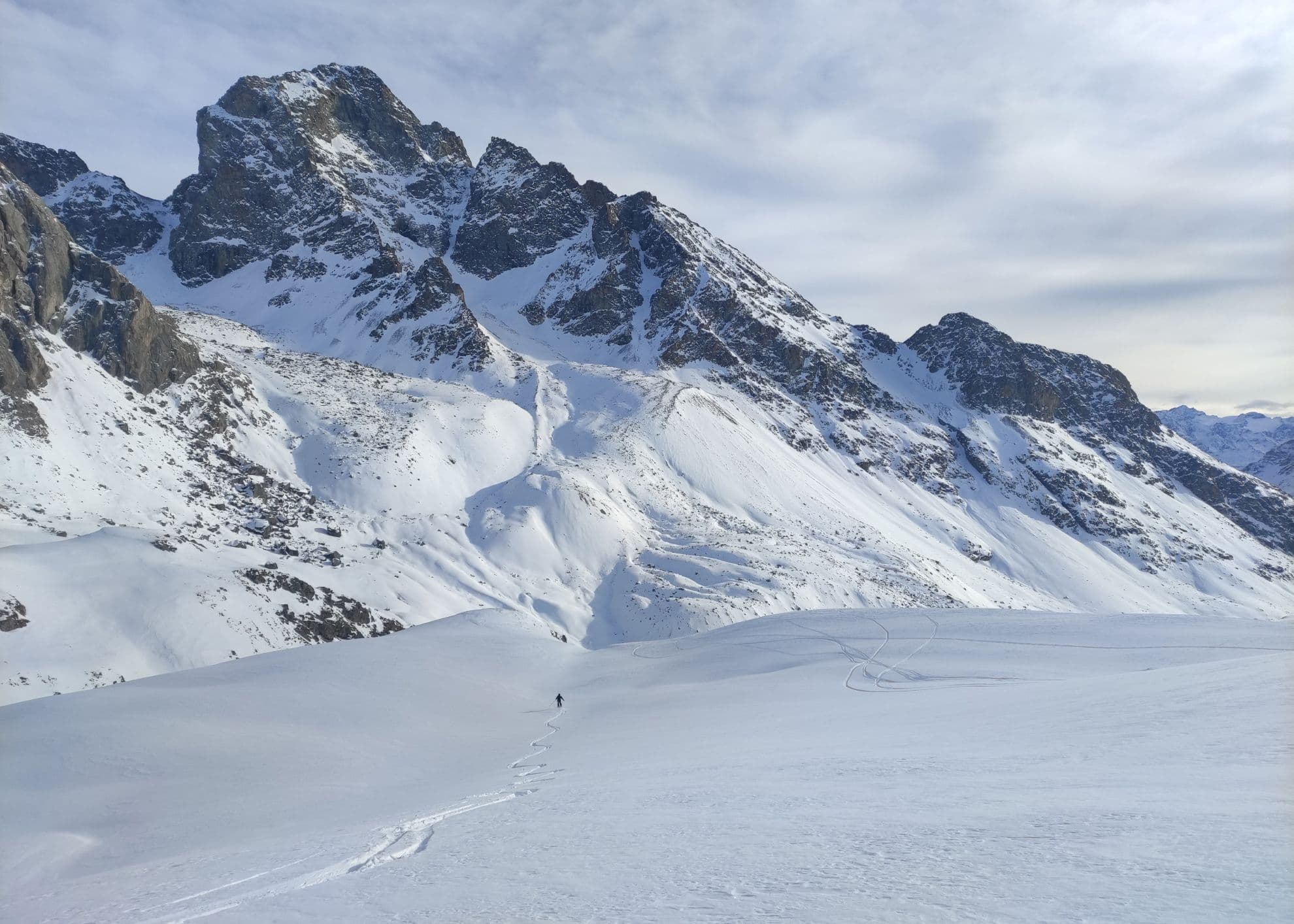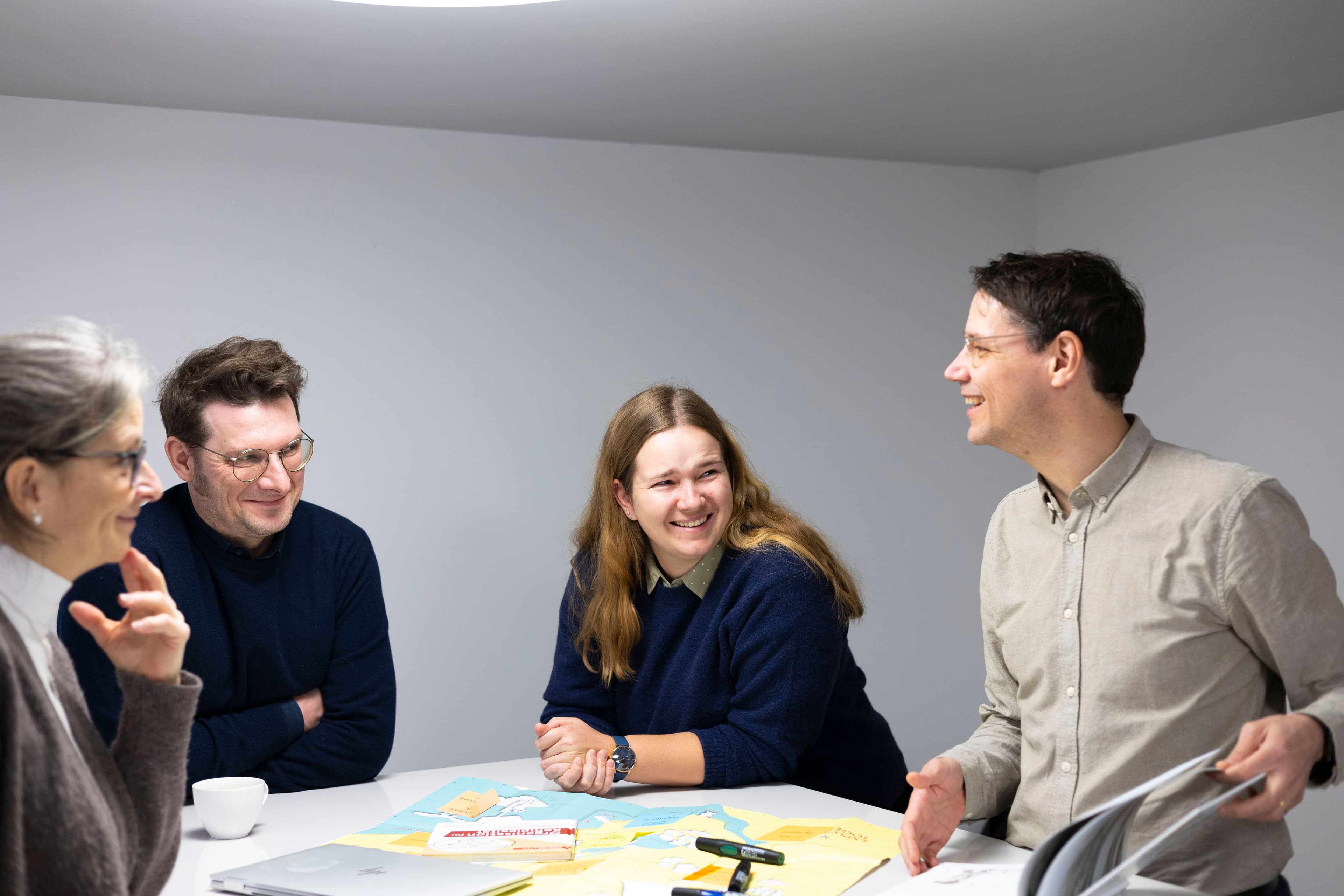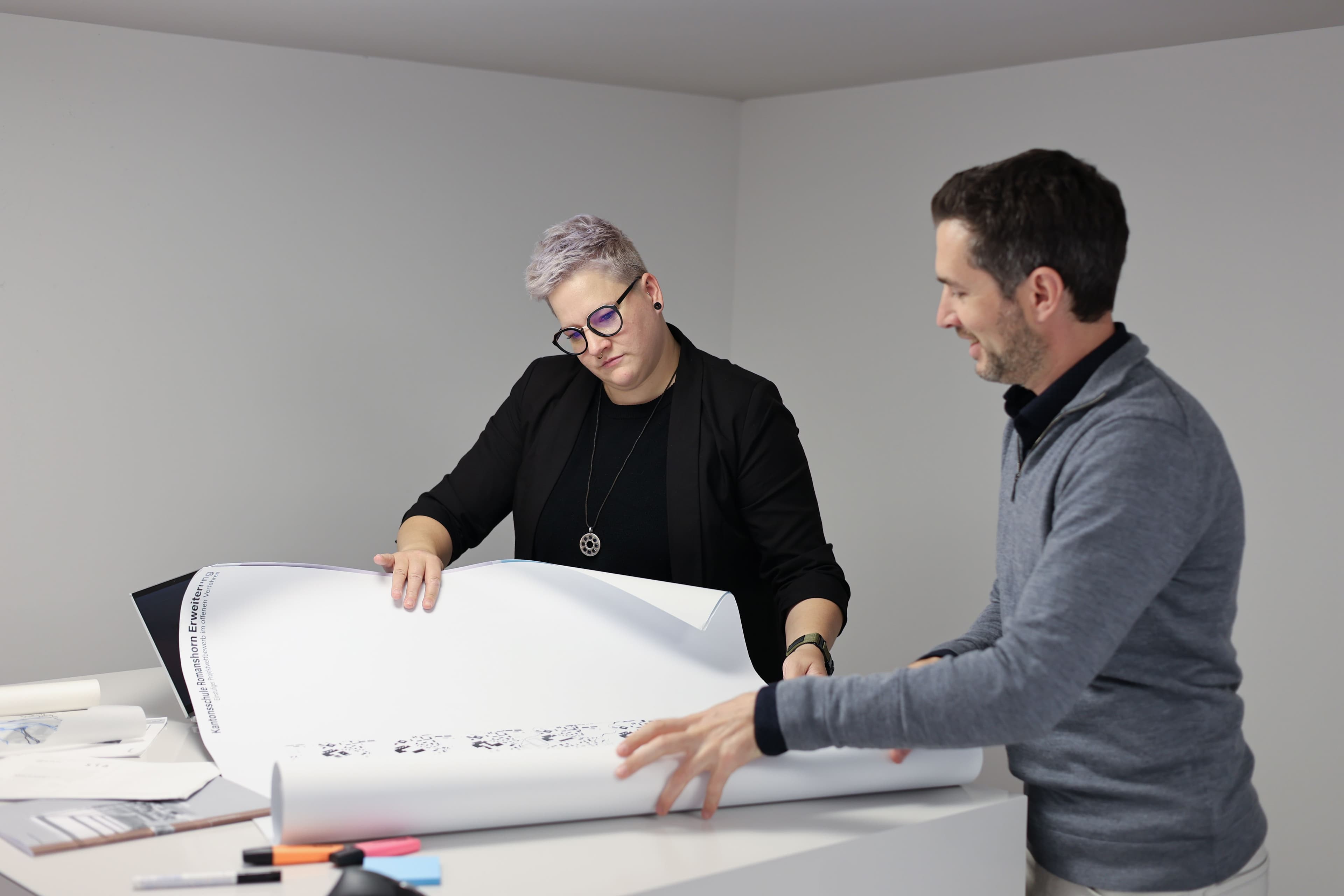No plans,
but plenty
of direction
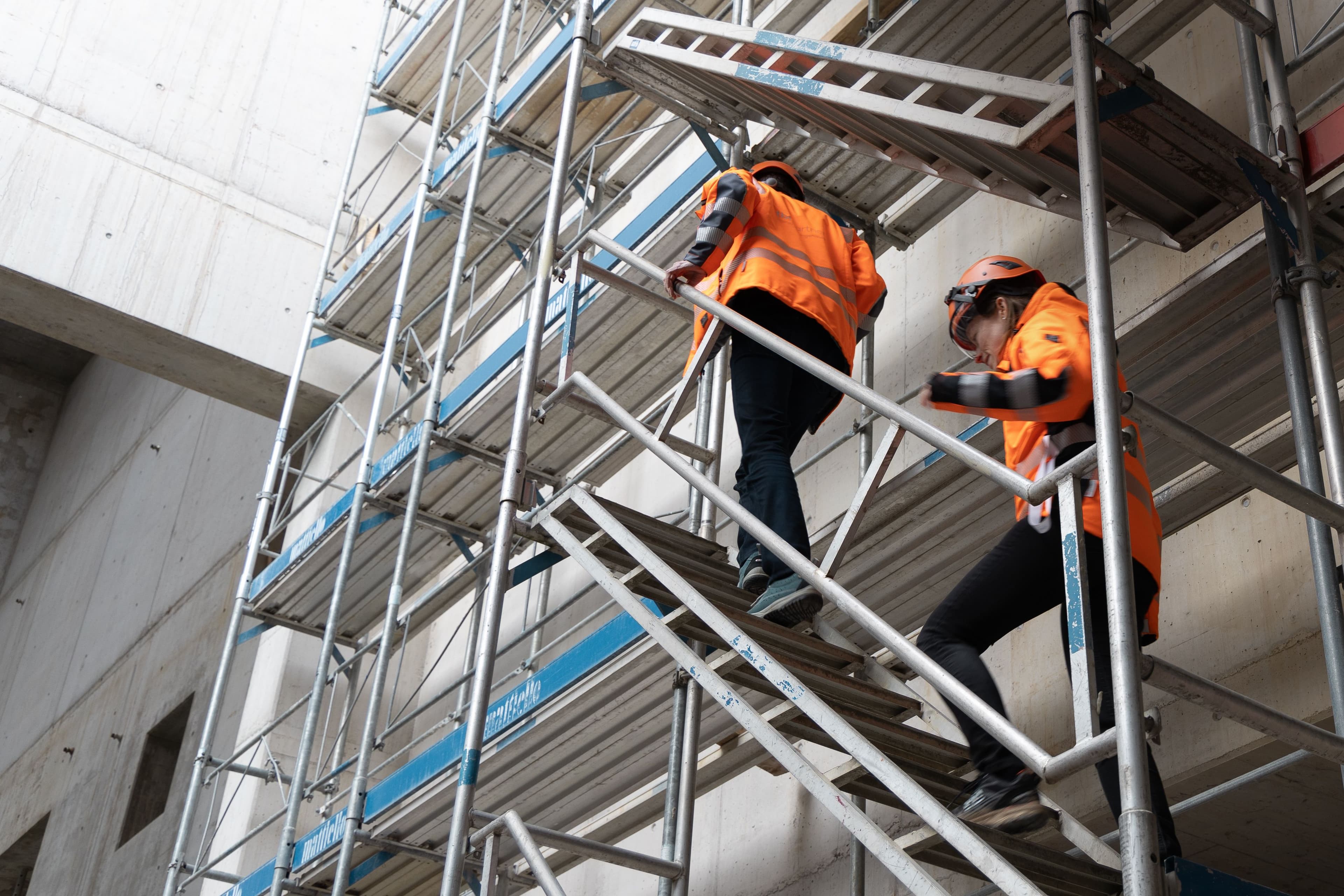
Quality matters to all of us. Whether we’re working on internal topics or with our customers and partners: we always share the common goal of reliable and future-oriented solutions. Digitalisation opens up new opportunities that go far beyond technical tools. For instance, work digitalisation can enhance transparency and enable seamless collaboration – which results in improved quality. Susanne Haag and Dominik Schenk tell us what digitalisation means for their day-to-day work and which opportunities stem from it.
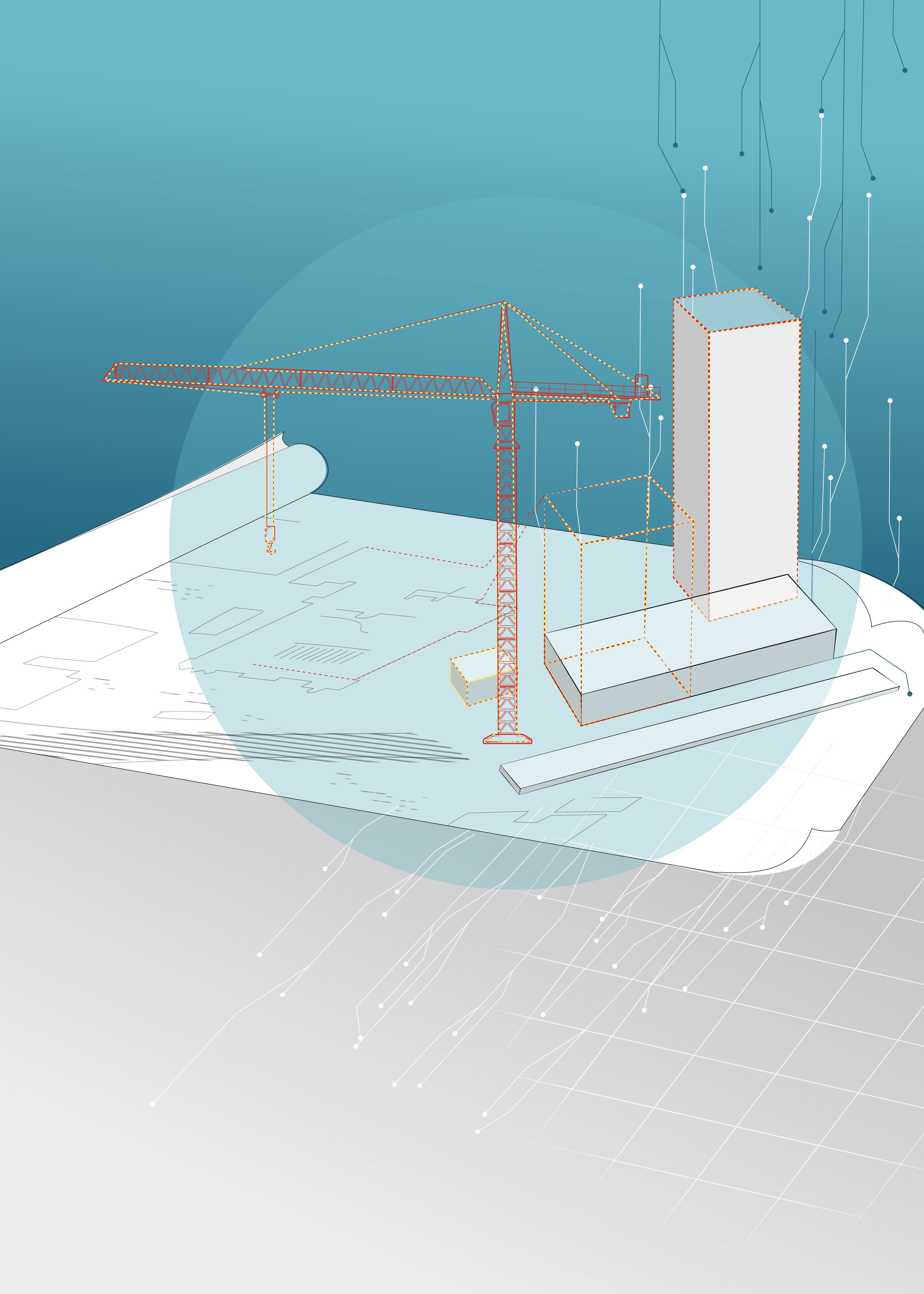
A centralised information platform – a logical step
Digital planning tools such as project platforms and 3D models are now an integral part of the planning world. The remodelling of the waste incineration plant Linth (canton of Glarus) is special in this regard, as all project parties have digitised their entire workflow. They rely on a centralised, shared platform and all of their work is completely digital – both in the office and on site.
All project parties can simultaneously access the same digital model, which combines key geometric information with details on planning, scheduling and cost. In practice, this means that the client, designers, suppliers and contractors all have access to the latest information. The platform-based collaboration extends beyond the direct project participants: a large part of the project was presented to the authorities using a digital model, too.
Working with a digital model has proved to be a great advantage, particularly in a complex remodelling project such as the waste incineration plant Linth, which encompasses existing buildings and components. By using a digital model, intermediate project states and changing interfaces can be reflected better, supporting the early identification and resolution of possible conflict.
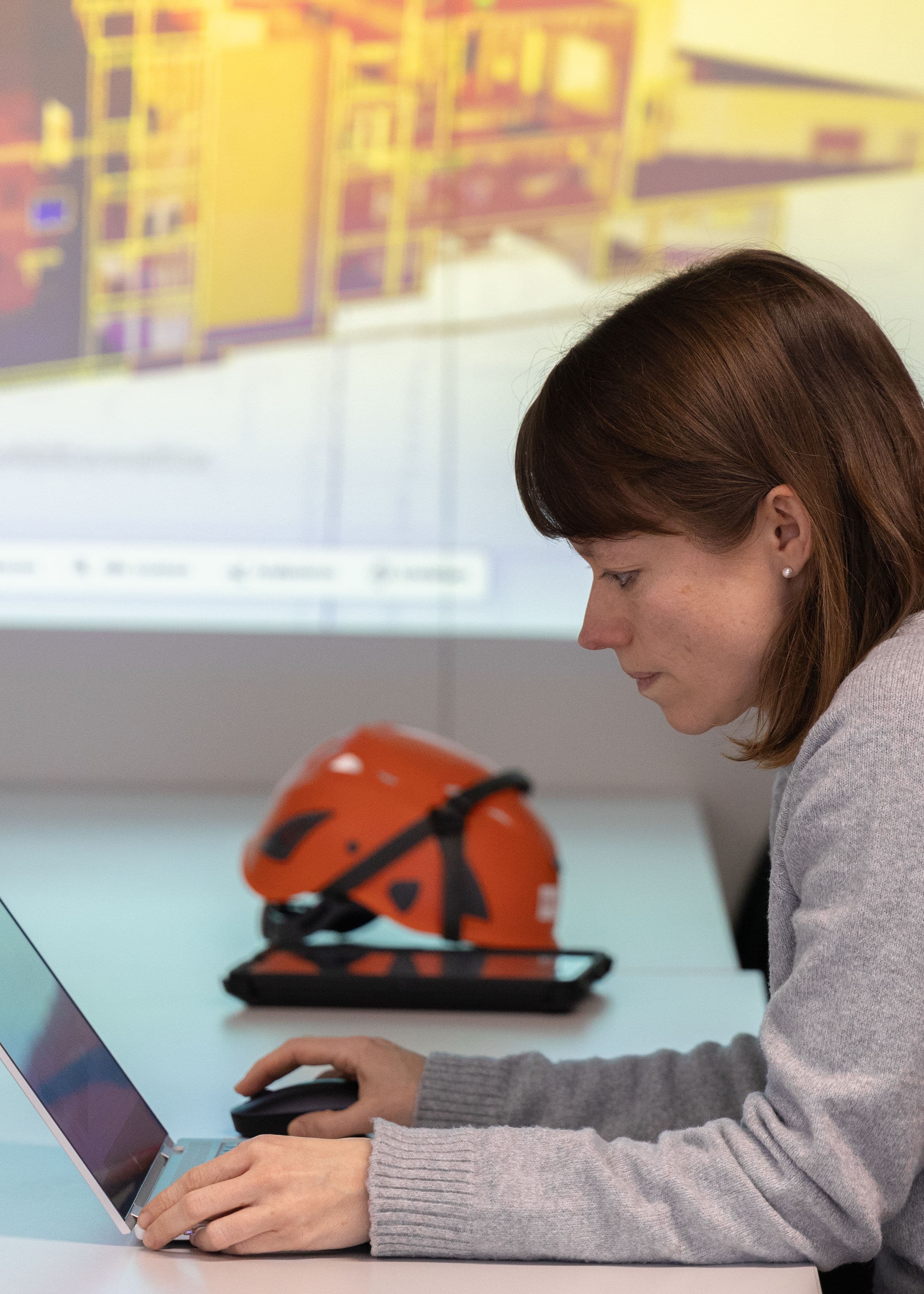
Model-based means more than just ‘networked’
Dominik, you and Susanne have been working as project managers with other TBF experts and project partners for the waste incineration plant Linth on a model-based basis for five years. What do you see as the specific strengths of this kind of work?
I think it’s important to bear in mind that model-based work (see BIM) doesn’t solve problems by itself, but the digital model does make the points of conflict more visible. This allows us to focus on collaboration and harmonisation between different parts of the project and the trades involved. The model makes the planned construction activities of all project participants visible, which enables the individual project partners to see their work in the overall context. For me, this is a decisive advantage in my day-to-day work on the project.
Dominik mentions strengthened collaboration. What do you think, Susanne?
On the waste incineration plant Linth project 2025, sharing our own work via the digital platform and model was a bit of a hurdle initially. It takes courage and trust to rethink services and disclose information. But it’s a step worth taking, as it promotes collaboration. This transparency shifts the focus away from risk management and onto the overall success of the project, which is a great opportunity for the future.
As project managers, the two agree: the transparency which is stimulated by model-based work helps to reach the overall project goal. The model also simplifies access to information for different parties. Reviewing a large project with construction plans on paper is a tedious and very complex processes, especially for non-experts. Instead, a digital model of a building can be pulled up quickly, using user-friendly software.
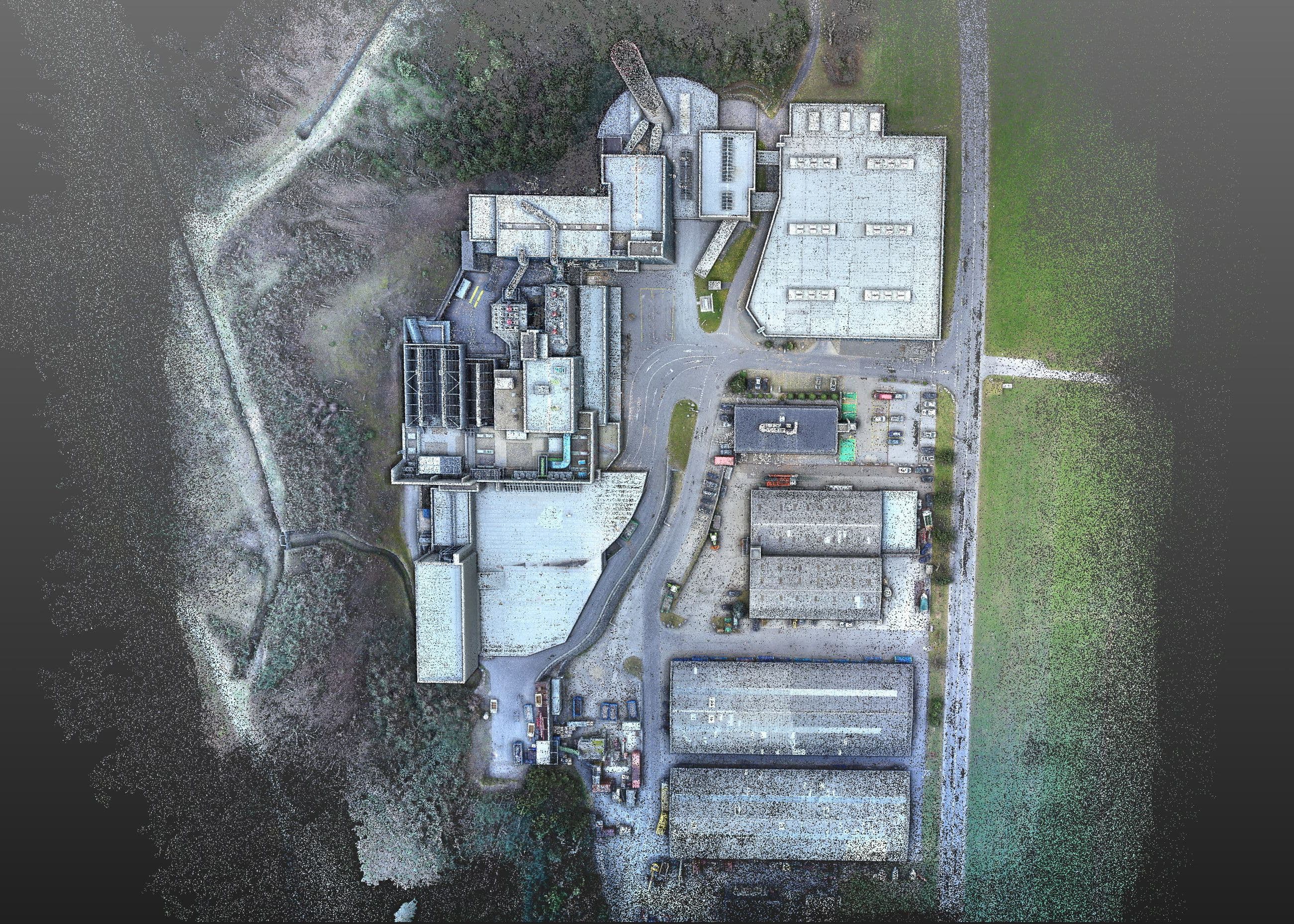
How does the structure of an existing building end up on your screen in the office?
Christian Wohlfarth is one of TBF’s experts in the digital recording of existing plants. Drone mounted-laser systems are used to "scan” the environment with a method called “LiDAR” (Light Detection and Ranging). A laser pulse is emitted from the drone-mounted system, and the time it takes for it to travel to a surface and back can be translated into a measurement. Using photogrammetry technology, the response times from the entire environment enable the visualisation of the plant as a point cloud.
A similar principle is used to capture the interior of the plant: ‘Each room is scanned individually with a laser scanner, as well as a 360° photo taken. The laser scans and photos are used to calculate a colourful, coherent point cloud of the interior spaces,’ Christian explains. Using these point clouds in combination with the existing plans, our model coordinator David Brönnimann and his team then create a so-called digital twin of the existing facility. As the remodelling of the plant is being carried out, the visualisation of the plant’s interior and exterior needs to be updated.
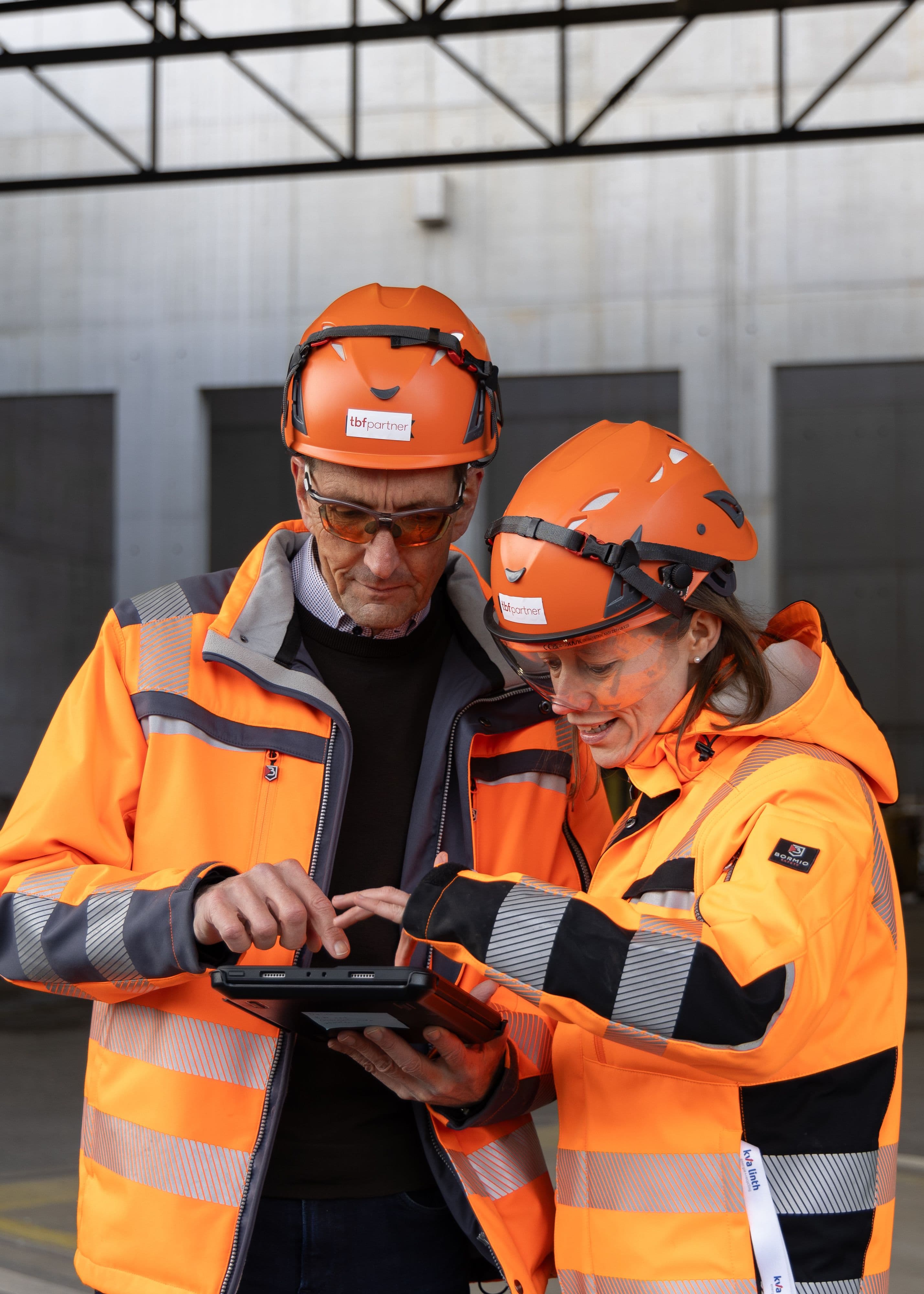
“Coordination is still the name of the game!”
Dominik Schenk and Susanne Haag agree: despite significant efficiency gains, model-based work still requires active communication.
What fascinates you about this project, Susanne?
I’m amazed at how big a step it is for the imagination: visualising the plant in a model makes it much easier to get your bearings on the construction site or in the plant. And that helps with mutual understanding.
What has been a big challenge for you, Dominik?
For me, the approval process shouldn’t be underestimated, especially in a phased conversion: it’s sometimes hard to distinguish between what’s already been approved in the model and what hasn’t been. On that end, there still needs to be clear coordination between the project participants.
What has been a great success for you, Susanne?
We were able to successfully submit our building permit as a digital model. I was very happy that we could gain the authorities trust and understanding. Although it took some persuading, it was ultimately welcomed as an innovative and efficient approach.
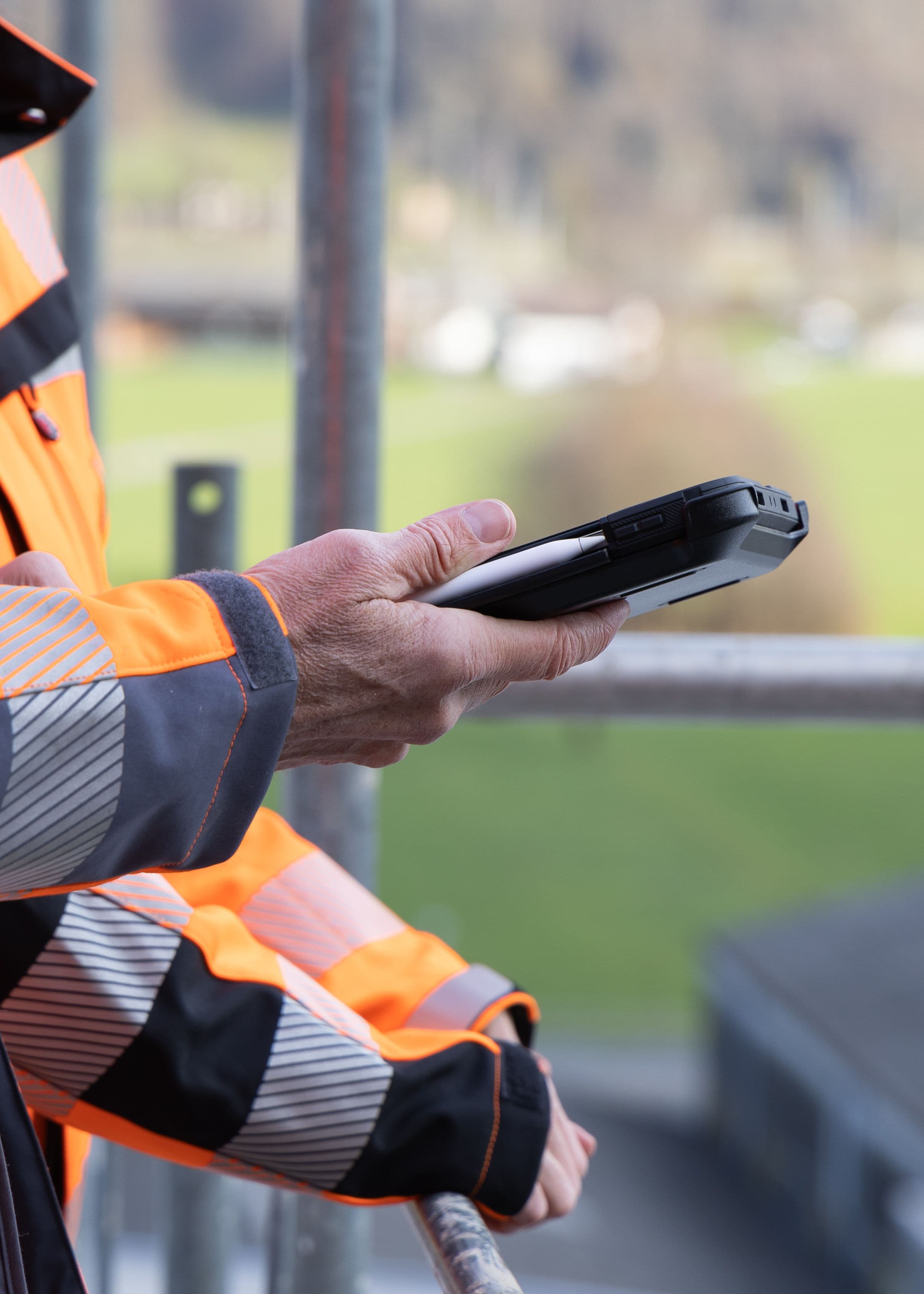
Putting people first – with or without paper
In the beginning, not everyone involved in the project was convinced of the merits of the exclusively model-based approach of this project. Dominik and Susanne see it as an essential part of their job to get people on board, take their needs seriously and offer support.
Where did people need the most convincing, Susanne?
Most engineers are familiar with digital tools. More support was needed directly on site – from fitters to ironworkers, everyone is working with the model and using a tablet instead of the usual paper plans.
What’s it like to walk around the site with a tablet?
It works wonderfully! Firstly, you cannot lose your printed, badly wrinkled paper plan, which may have been rained on multiple times. Secondly, you always have an easy-to-read, up-to-date 3D plan in front of you on the tablet, making it easy to find your way around.
You keep on mentioning the improved transparency that comes with model-based construction. Dominik, does it also improve quality?
The short answer is yes. But even with a centralised data model, there’s no replacement for careful planning. This means that extensive dialogue between project partners is still needed. Even though the BIM methodology is data-based and digital, that doesn’t mean that everything is self-explanatory. Experts who actively think and contribute are still essential. However, the quality of the planning and implementation processes can be significantly improved through digitalisation.
Prospects for the future
